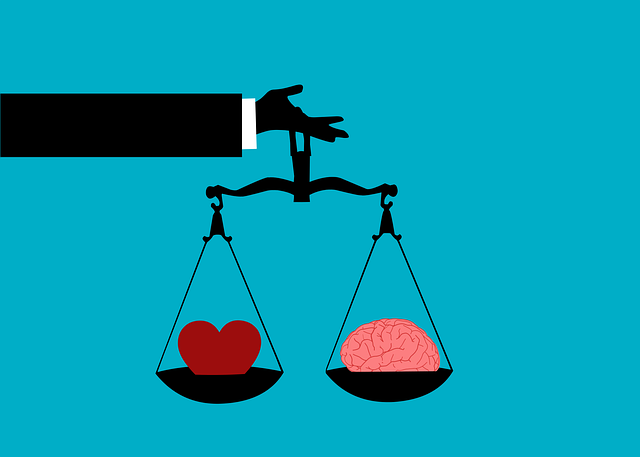Understanding California’s Drug Laws: What Drugs Are Legal In California

Introduction
California has a complex set of laws governing the possession, use, and distribution of controlled substances. These laws protect public health and safety while providing opportunities for individuals to seek treatment and rehabilitation. In this comprehensive guide, we’ll delve into the various categories of drugs, the penalties for possession, and the far-reaching legal consequences of drug-related offenses in California.
Controlled Substance Schedules
California categorizes controlled substances into five distinct schedules based on their potential for abuse and accepted medical use:
- Schedule I drugs: Substances with a high potential for abuse and no accepted medical use, such as heroin and LSD.
- Schedule II drugs: Drugs with a high potential for abuse but some accepted medical uses, including cocaine and methamphetamine. These substances are strictly regulated.
- Schedule III-V drugs: Substances with a lower potential for abuse and accepted medical uses, such as codeine and anabolic steroids. These drugs are still regulated but carry less severe penalties for possession.
Understanding the nuances of these schedules is crucial for determining the severity of drug offenses and the corresponding penalties. However, critics argue that the current scheduling system is outdated and in need of reform to reflect the changing landscape of drug use and treatment.
Possession Laws and Penalties

In California, the consequences of drug possession depend on several key factors, including the type and quantity of the substance and the intent behind the possession.
Simple Possession
Simple possession, which involves a small amount of drugs for personal use, is typically charged as a misdemeanor. Penalties may include:
- Up to one year in county jail
- A fine of up to $1,000
- Probation and mandatory drug counseling
Possession for Sale
In contrast, possession of larger quantities of drugs with the intent to sell is considered a felony offense. Consequences may include:
- Up to four years in state prison
- Substantial fines
- Felony probation
- Mandatory drug treatment programs
Prosecutors often rely on circumstantial evidence, such as the presence of scales, baggies, or large sums of cash, to prove intent to sell.
It’s important to note that possessing more significant quantities of drugs can lead to enhanced penalties, including longer prison sentences and steeper fines. While these laws aim to deter drug use and distribution, critics argue that harsh penalties do little to address the root causes of addiction and may disproportionately impact marginalized communities.
Misdemeanor vs. Felony Charges

The severity of drug charges in California hinges on several key factors:
- The type and quantity of the drug
- The intent behind possession (personal use vs. sale)
- The defendant’s prior criminal convictions
Misdemeanors are less severe offenses, resulting in:
- Shorter jail sentences (typically up to one year)
- Lower fines
- Less stringent probation requirements
On the other hand, felony charges are reserved for more serious drug crimes and carry:
- Longer prison sentences (often multiple years)
- Higher fines
- Stricter probation conditions
- Potential loss of certain rights (e.g., voting, firearm ownership)
Prosecutors have discretion in determining whether to charge an offense as a misdemeanor or felony based on the circumstances of the case.
Understanding the distinction between misdemeanors and felonies is essential for anyone facing drug-related charges. While the law allows for some flexibility in differentiating between low-level offenders and significant traffickers, felony convictions can have long-lasting consequences that extend beyond the criminal justice system, such as difficulty finding employment, securing housing, or obtaining professional licenses.
Related Terms: illegal drugs, drug possession charges, possession of a controlled, health and safety code, California health, federal law, drug diversion program, restricted dangerous drugs
Marijuana-Specific Regulations

California has been at the forefront of marijuana law reform with the passage of the Adult Use of Marijuana Act (Proposition 64) in 2016. Under current law, adults 21 and over can legally:
- Possess up to 28.5 grams of marijuana or 8 grams of concentrated cannabis
- Cultivate up to six marijuana plants for personal use
- Purchase marijuana from licensed dispensaries
However, it’s crucial to be aware of local jurisdiction regulations, as cities and counties may impose additional restrictions on marijuana possession, cultivation, and sales.
Medical marijuana use has been legal in California since 1996 with a valid physician’s recommendation. Patients can possess larger quantities of marijuana than recreational users and may cultivate more plants if needed for their medical condition.
While marijuana decriminalization has reduced arrests and allowed for regulation and taxation, concerns persist about youth access, impaired driving, and public health impacts. Policymakers continue to grapple with striking the right balance between individual freedom and public safety.
Drug Diversion Programs and Rehabilitation Options

California recognizes that addiction is a complex issue requiring a multifaceted approach. To this end, the state offers several drug diversion programs and rehabilitation options for individuals facing drug-related charges:
Deferred Entry of Judgment (PC 1000)
- Allows first-time, non-violent offenders to have their charges dismissed upon successful completion of a drug treatment program
- Requires a guilty plea, but no conviction is recorded if the program is completed satisfactorily.
Proposition 36 (PC 1210)
- Provides probation and drug treatment instead of incarceration for eligible offenders
- This applies to non-violent drug possession offenses
- Offers multiple opportunities for participants to succeed in treatment before facing jail time
Drug Courts
- Specialized court programs that combine intensive supervision, drug testing, and treatment services
- Aim to break the cycle of addiction and criminal behavior.
- Often require regular court appearances, counseling, and community service
While these programs prioritize treatment and rehabilitation over punishment, they may have limited availability, strict eligibility requirements, and long waiting lists in some areas. Advocates argue for increased funding and expansion of these programs to better address the needs of individuals struggling with addiction.
Actual vs. Constructive Possession

In drug cases, the concept of possession can be more complex than it initially appears. California law recognizes two types of possession:
Actual Possession
- The drug is physically on the person or under their direct control
- Easier for prosecutors to prove as the connection between the individual and the substance is clear
Constructive Possession
- The person has control over the drug or the place where it is found, even if not physically possessing it
- Often arises in cases where drugs are found in a shared space, such as a home or vehicle.
- Requires prosecutors to establish the defendant’s knowledge and control over the substance
Constructive possession cases can be more challenging for the prosecution, as they must show the defendant had the ability and intent to exercise control over the drugs.
Joint Possession

Joint possession occurs when two or more individuals knowingly share control over a controlled substance. In these cases, each person can be held criminally liable for the entire quantity of drugs, even if they were not physically holding them at the time of arrest.
For example, if two friends are caught sharing a bag of cocaine, both could face joint possession charges, regardless of who was holding the bag. Joint possession cases can become complex when determining the level of knowledge and control each individual had over the substance.
Prescription Drugs and Medical Use

California law recognizes that some controlled substances have legitimate medical uses when prescribed by a licensed physician. Possessing prescription drugs is legal if:
- The medication was lawfully prescribed to the individual
- The individual possesses only the amount prescribed
- The medication is stored in its original labeled container
However, possessing prescription drugs without a valid prescription or sharing them with others is illegal and can result in criminal charges. This applies even if the intention is for study purposes or personal use.
It’s crucial to understand that selling or giving away prescription drugs, even if you have a valid prescription, is a severe offense that can lead to felony charges.
Defenses and Legal Representation
If you or a loved one is facing drug charges in California, it’s essential to seek the guidance of an experienced criminal defense attorney. Law firms offer free initial consultations to discuss your case and explore potential defenses.
Some common defenses against drug charges include:
- Unlawful search and seizure: Challenging the legality of the search that led to the discovery of the drugs based on violations of your Fourth Amendment rights
- Lack of knowledge or intent: Arguing that you were unaware of the presence of the drugs or did not intend to possess them
- Entrapment: Claiming that law enforcement induced you to commit a crime you would not have otherwise committed
- Medical necessity: Demonstrating that the possession and use of the drug were medically necessary and under the guidance of a licensed physician
An experienced attorney can review the specific circumstances of your case and develop a tailored defense strategy to protect your rights and achieve the best possible outcome.
Related Terms: criminal record, ii narcotics, offenses related, up to one ounce, plead guilty, separate offenses, schedule iv, drug charge, free consultations, other drugs, California drug, broad categories
Conclusion
Navigating California’s complex drug laws can be a daunting task, as the consequences of a conviction can be severe and long-lasting. From understanding the state’s controlled substance schedules to grasping the nuances of possession laws and sentencing guidelines, it’s essential to have a clear picture of the legal landscape surrounding drug offenses.
While California has taken steps to prioritize treatment and rehabilitation over punitive measures, the state still maintains strict penalties for drug possession, particularly for substances deemed to have a high potential for abuse.
Critics argue that these harsh sentencing policies disproportionately impact marginalized communities and fail to address the underlying issues of addiction and mental health.
As California continues to refine its approach to drug policy, it’s crucial for individuals facing drug charges to seek the guidance of a skilled criminal defense attorney.
By understanding your rights, exploring available defenses, and advocating for alternative sentencing options when appropriate, you can work towards a resolution prioritizing your health, well-being, and prospects.
Ultimately, the most effective way to avoid the life-altering consequences of a drug conviction is to seek help for substance abuse issues and prioritize your physical and mental health.
By engaging in prevention, education, and treatment programs, individuals can break the cycle of addiction and build a foundation for a brighter, more stable future.
Drug Possession
Possession of controlled substances is illegal in California, with penalties varying based on the type and amount of drug, as well as the circumstances of the offense. Possession can be categorized as simple possession (for personal use) or possession intending to sell.
Example: An individual caught with a small amount of cocaine for personal use may face misdemeanor charges. At the same time, someone found with a large quantity of the drug may be charged with a felony for possession with intent to sell.
Controlled Substance Schedules
California divides controlled substances into five schedules based on their accepted medical use and potential for abuse. Schedule I drugs have no accepted medical use and a high potential for abuse, while Schedule V drugs have a low potential for abuse and accepted medical uses.
Example: Heroin is a Schedule I drug, while codeine, a prescription opioid, is a Schedule II drug.
Marijuana Laws
California legalized recreational marijuana use for adults 21 and older in 2016. Adults can possess up to 28.5 grams of marijuana and grow up to six plants for personal use. However, it remains illegal to sell marijuana without a license or to drive under the influence of the drug.
Example: An adult over 21 can legally purchase marijuana from a licensed dispensary for recreational use, but they cannot sell it to others without a proper license.
Prescription Drug Offenses
It is illegal to possess prescription drugs without a valid prescription from a healthcare provider. Sharing, selling, or distributing prescription drugs is also against the law, even if the drugs were obtained legally.
Drug Diversion and Rehabilitation
California offers several drug diversion and rehabilitation programs for individuals facing drug charges. These programs aim to address substance abuse issues and provide treatment rather than focusing solely on punishment.
Example: Proposition 36, also known as the Substance Abuse and Crime Prevention Act, allows non-violent drug offenders to receive probation and participate in drug treatment programs instead of serving prison time.
Related Terms: schedule ii drugs, schedule iii drugs, prior convictions, California state law, drug dealing, recreational marijuana, drug schedules, other circumstances, possible defenses, vary depending, large quantities













